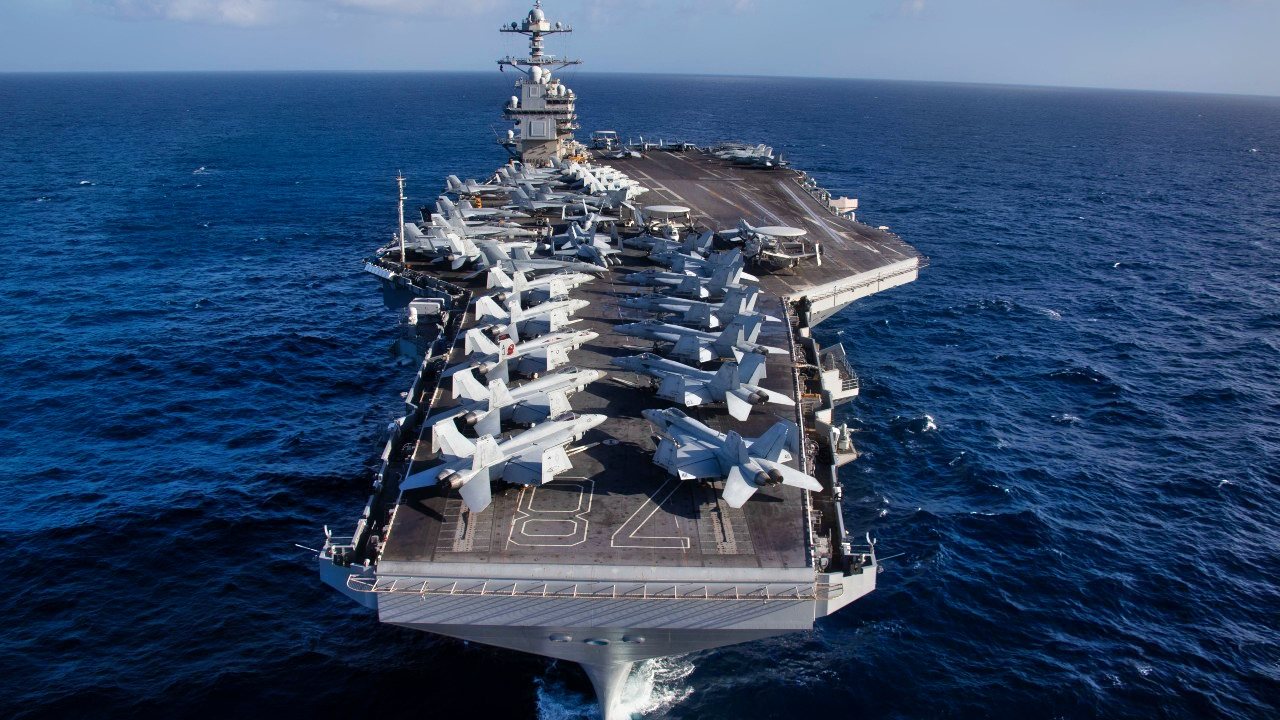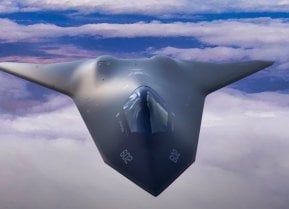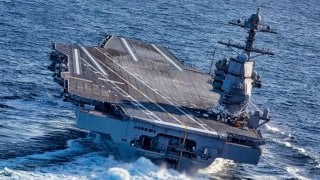$13,000,000,000 Heist: Did China Steal the Plans for the Ford-Class Aircraft Carrier?
China's recent naval expansion, highlighted by the construction of the Fujian aircraft carrier, has led to suspicions that China may have stolen blueprints or key data for the U.S. Navy's Ford-class carriers.
Summary and Key Points: China's recent naval expansion, highlighted by the construction of the Fujian aircraft carrier, has led to suspicions that China may have stolen blueprints or key data for the U.S. Navy's Ford-class carriers.

-While it remains unconfirmed, China's history of acquiring U.S. military technology, such as the J-20 fighter resembling the F-35, fuels these concerns.
-The Fujian, though an improvement in Chinese carrier technology, still falls short of the Ford-class in size and capabilities.
-Notably, the Fujian features an electromagnetic catapult system similar to the Ford-class's EMALS. Despite these advancements, China lacks the logistical infrastructure to match the U.S. Navy's global operations.
The Ford-Class: Did China Steal Its Secrets?
Did China steal the blueprints or key data for the U.S. Navy’s Ford-class carrier? It is possible, with experts and news outlets debating the issue over the last several years.
China’s aggressive naval expansion, centered around the construction of new aircraft carriers like Fujian, has raised questions over where exactly the Chinese are getting their concepts. Fujian bears some technological resemblance to the Ford-class, and the ship represents a significant leap in Chinese technological capabilities.
It Wouldn’t Be the First Time
Paranoia over Chinese espionage is not misplaced. China has a history of pilfering U.S. military technology. The Chengdu J-20, China’s first fifth-generation fighter, looks quite a bit like the Lockheed Martin F-35. And when a top-secret stealth Blackhawk crashed in Pakistan during the raid on Osama bin Laden’s compound, Pakistan reportedly sold the wreckage to China, allowing Xi Jinping’s regime to better understand American stealth technology.
China’s behavior is hardly unusual, or even malicious. States do whatever they can to gain an advantage over other states. For Chinese leadership not to try collecting every technological advantage possible would be negligent. The same goes for America, which once transported a group of Nazi scientists (some war criminals) to America where they could continue their work, without consequence for their past sins, and to the benefit of American technological growth.
The point being, China is definitely trying to attain American military-technology secrets. The question is to what extent the Chinese have been successful, and in this specific instance, whether they have attained the blueprints to the Ford class.
Ford-Class Aircraft Carrier v. Fujian
Fujian represents a marked improvement in Chinese carrier technology – but it still falls well short of matching the Ford class.
“Fujian is smaller – about 80,000 tons versus 100,000 tons for the Ford-class – which means it will carry fewer aircraft,” Sam Roggeveen of the Lowy Institute’s International Security Program told Newsweek. “Also, Ford-class ships are nuclear-powered, and Fujian is not, which means Fujian will have less endurance and less space on board for aviation fuel.”
Fujian does feature an electromagnetic catapult system, however – just like the Ford class.
EMALS, as the system is known on the Ford, was a revolutionary design that replaced the traditional steam-powered catapult systems found on the Nimitz and other preceding classes. EMALS, in theory, promises to offer higher-tempo aircraft launching, with less stress to the airframes launched and less system maintenance.
EMALS is being billed as a major upgrade. Were the Chinese able to develop an EMALS-like system on their own? Hard to say, but the coincidental timing has raised eyebrows.
Regardless, China still isn’t at the U.S. level with respect to naval warfare.

“China lacks the infrastructure to operate Fujian far from home for long periods,” Roggeveen said. “It has only a small fleet of replenishment ships of the kind that typically accompany a carrier fleet and keep it topped up with fuel, munitions, and stores. And China has nothing like America’s vast global network of ports and bases where its carriers can be replenished, and crews can rest.”
Still, the U.S. will want to keep an eye on China’s ever-expanding naval abilities, and Xi’s corresponding Indo-Pacific ambitions.
About the Author: Harrison Kass
Harrison Kass is a defense and national security writer with over 1,000 total pieces on issues involving global affairs. An attorney, pilot, guitarist, and minor pro hockey player, Harrison joined the US Air Force as a Pilot Trainee but was medically discharged. Harrison holds a BA from Lake Forest College, a JD from the University of Oregon, and an MA from New York University. Harrison listens to Dokken.
All images are Creative Commons.


